Journal of Creation 38(1):15–18, April 2024
Browse our latest digital issue Subscribe
Amyloids are not sources of information
Prof. Emer. Peter Maury,1 from the University of Helsinki, had a distinguished career in medical research focusing on amyloids,1 amyloidosis, and fibrillogenesis. He is now a leading proponent of the Amyloid World Hypothesis, which recognizes the need to explain the origin of information in biological systems. He claimed, in a 2018 review article, that amyloids produced under allegedly plausible prebiotic conditions performed information processing, information transfer, and error correction. Specifically:
“The amyloid world hypothesis posits that in the pre-RNA era, information processing was based on catalytic amyloids … . The new functions include … information transfer … and error-correcting information-processing system.”2
Coded symbols are a defining characteristic of informational messages, and this seems to have been taken into account:
“In the encryption process, environmental information is encoded in the three-dimensional structure of the amyloid conformer. The steric information can then be transferred … generating replicas of the spatially altered amyloid conformer.”2
That was when the alarm bells went off. Environmental information? Deterministic responses to environmental influences and steric shapes do not create information. For example, smoke shapes result from heat and mutual interactions, but this was not the source nor the content of the information communicated by the native Americans using smoke signals. It is the implementation.
Informational messages must meet specific criteria, whether in biological systems, technology, human language, or other examples of information exchange. The smoke signals used pre-agreed-upon symbols (size and duration of individual smoke clouds), a syntax (the order of symbols), a semantic meaning, an intended activity to perform, and an ultimate goal.
Therefore, the native Americans could communicate, for example, over distances where a herd of buffalo had been located, or that enemies were approaching, expecting suitable action to be taken.
Deterministic causes coupled with replication are not information! For example, drops of water dripping down a slope from one stone to another can attract moisture, produce ‘daughter’ drops, and ‘replicate’. This satisfies the evolutionist definition of a replicator, whereby some kinds of drops will replicate faster (‘natural selection’).
Astonishingly, someone as intelligent as Maury indeed made an analogous argument:
“Information transfer on the early Earth for about 4000 million years ago [sic] occurred, according to the amyloid hypothesis, by means of a β-sheet peptide-based prion-like amyloid system in which environmentally derived information encrypted in the β-sheet zipper structure was transmitted by a templated conformational self-replication mechanism to ‘daughter’ amyloid entities. Recognition was mediated by amino acid side chain complementarity and coding by the β-sheet zipper structure [emphases added].”2
Other Amyloid World proponents, like Rout et al., correctly noted that forming highly ordered amyloid aggregates is analogous to crystallization.3 In crystallization, a seed crystal attracts copies of the same, or similar, molecules to produce larger crystals. The molecules being added are ‘moulded’ into certain locations by the existing structure, forming the distinctive crystal lattice. Just like water molecules are moulded when attaching to the surface of an existing drop. But is this how RNA and DNA information is created? By adding nucleotides through physical interactions, and transferring shape details to produce additional copies?
According to the Amyloid World Hypothesis researchers, yes. In fact, conflating direct physical cause–effect with information is claimed to be advantageous, being faster:
“The information content of the β-sheet system, though potentially large, is very limited when compared to the virtually unlimited information content of a nucleic acid-based genetic system. The β-system allows, on the other hand, for more rapid responses to environmental changes which would likely have been an advantage during early molecular evolution.”2
Physical factors causing crystallization, gas expansion, water freezing, etc. are not how coded instructional messages arise. The codons of DNA and mRNA, which specify protein sequences, don’t even interact with the activated amino acids (AAs). The meaning of the codons can be assigned arbitrarily.4 Additional codes specify when to initiate transcription, how proteins are to fold, where they are to be sent, and their half-lives.5,6
Without a code, AAs polymerize randomly (if they do at all). However, multiple copies of many kinds of proteins are required for biological processes. These must possess very special sequences to provide enzymatic functions and to create the cytoskeleton. They also transport biochemicals, form sensors, carry signals, etc. Correct function also requires that only a small number of protein surfaces interact with other biochemicals.
Therefore, prebiotic researchers have devoted much effort to finding conditions that produce non-random sequences. This is a misguided endeavour. They wish to avoid any implication of teleology, since natural processes should not display goal orientation. But why should compulsory, miniscule linking preferences among AAs or nucleotides produce useful functions? Especially when we see how different the thousands of protein families found in cells are.7 Therefore, the precise specifications provided by DNA sequences pose a dilemma for materialists.
It is ironic that OoL researchers have been so active in attempting to find natural processes for AAs to self-assemble into large peptides in high concentrations. The fact that AAs do not link easily is more than fortunate, since otherwise the sequences specified by DNA would be corrupted by random insertions. This was a central point made by Professor Tan, who pointed out that the facile ability of AAs to self-link and thereby insert themselves into purposeful protein sequences would prevent life from existing!8
The amyloid experiments
In amyloid experiments, peptide templates were carefully designed which could interact with tailored peptides to form β-sheets, as shown in figure 1.2,9 Multiple copies could then form conglomerates with a distinctive structure. This interaction was alleged to produce information. In addition, when the substrates were one to three residues shorter, specific activated AAs were preferentially selected, being able to extend the β-sheet (see figure 1).
Maury explained:
“From a primordial pool of random uncoded short protopeptides, the adaptive template-directed chiroselective and error correcting replication cycles generated amyloids that represented the first ‘coded’ peptide polymers. Direct chemical interaction between amino acids/peptides and ribonucleotides in the primordial environment was probably important [sic] the evolution of the genetic code.”2
This refers to experiments designed to avoid side-chain reactions, and others designed to add specific AAs, with a slight preferential (or the L-enantiomer) to form β-sheets.2
These experiments were not performed under plausible prebiotic conditions.10-12 Unrealistic details included modification of the peptides with end-capping groups and activated aa. To form long fibrils, impossibly high concentrations of specific pure modified peptides were necessary.9
Amyloids are supposed to have produced an RNA world. This is peculiar since the opening paragraph stated that a functional ribonucleotide polymer could not have existed under putative early Earth conditions.2
We have frequently encountered the word ‘information’ being applied to simple deterministic physical effects to then claim that information stored on DNA arose through natural processes. This is a category mistake.13
What is information?
Information is used to communicate instructions or understanding between a sender and receiver. Informational messages must meet specific criteria, whether in biological systems, technology, human language, or other examples of information exchange, as we have discussed in depth.4 Biological systems are incomprehensible without taking information into account, requiring retro-engineering purposes and goals. Hundreds of different programs are used by cells.5,6
Professor Gitt’s five-level hierarchical model clarifies if coded information is involved, as shown in figure 2.14,15
Examples of pragmatics in cells include generating the correct proteins in the proper proportions and locations, followed by carefully choreographed events to repair damaged tissue or produce an immune system response. The outcome is caused neither by the physical attributes of DNA, mRNA, nor the decoding equipment ribosomes. The achieved purposes include producing a complex organism with hundreds of integrated parts and reproducing.
The amyloid experiments might seem to exemplify aspects of the lowest level, statistics, since a small preference exists to add a particular AA at a specific location. But this is not equivalent to a symbol in a code. All codes are indeed implemented using physical principles, in particular analogue codes. But are three stones and a stick in a hole a code or are they there for physical reasons having no further meaning? It depends on whether a pre-agreed-upon code had been set up between sender and receiver, linked to a process to generate specific outcomes or cognitive understanding.
Mass media, YouTube, and the modern form of (mis)education
Much of the indoctrination in evolution, defined as litter → LUCA → Laureates, is currently being conducted through mass media and YouTubers. Very few read, or are qualified to understand, the primary evolutionary literature. Middlemen produce interpretations, having a veneer of vague, conceptual plausibility, with a generous sprinkle of technical terms thrown in.
One YouTuber who has engaged in many online video debates with creation scientists and Intelligent Design supporters reviewed Maury’s paper and educated his followers with the missing details for how amyloids supposedly led to the modern genetic system. Disturbingly, more people see videos like these than are critically evaluating the primary literature.
With supreme confidence, the YouTuber explained:
“And ATP is another naturally occurring energy source near hydrothermal vents. So, we know that amyloids have ATPase activity they can utilize the energy of ATP to do work. And once you develop this interaction between amyloids and ATP, it’s only a matter of time until you start having refinements into the information storing system. The stringing of ATP and different triphosphate nucleotides together into DNA and RNA, the incorporation of lipids which are again found naturally at hydrothermal vents and which spontaneously formed bilayer membranes; as well as the creation of protein enzymes to do specific function.”16
Addressing all the errors in this one paragraph alone required a full paper.17 The point was not to single out a particular YouTuber who has put out excellent videos on other topics. Our concern is that careless wording by evolutionary scientists and those embellishing and passing on errors are seriously misguiding many.
Evolution theory and the influence of science fiction
Norbert Wiener, the founder of Control Theory, showed that information is a real entity, and that reality can only be understood by taking the effects of matter, energy, and information into account.18,19 Downgrading the meaning of information instead of using well-understood concepts to describe matter leads to serious mistakes. Not only is what philosophers call a category mistake created, but a tendency is increasing in the origin of life community to replace hard scientific work with vague imagery.
Evolutionary imagery is rampant in science fiction films. In a memorable scene in Jurassic Park 1, baby dinosaurs were born without fathers:20
“Henry Wu: Actually, they can’t breed in the wild. Population control is one of our security precautions. There is no unauthorized breeding in Jurassic Park.
Ian Malcolm: Uh, and how do you know they can’t breed?
Henry Wu: Well that’s because all the animals in Jurassic Park are female. We’ve engineered them that way.
…
Ian Malcolm: John, the kind of control you’re attempting here is, uh, it’s not possible. If there’s one thing that the history of evolution has taught us, it’s that life will not be contained. Life breaks free. Expands to new places and crashes through barriers. Painfully, perhaps even dangerously. But … uh well, there it is.
John Hammond: There it is.
Henry Wu: You’re implying that a group composed entirely of females will … breed?
Ian Malcolm: No, I’m simply saying that life … uh, finds a way [emphasis added].”
The association of evolution with miraculous creative properties is cemented into technical papers. Whenever complex biological features are found which clearly look designed, standard pro forma phrases are inserted, such as ‘through evolutionary processes’; ‘in the course of evolution’; ‘fine-tuned by evolution’; or ‘evolutionary pressure caused’.
Or as the YouTuber put it:
“… it’s only a matter of time until you start having refinements into the information storing system.”16
References and notes
- Prof. Emer., Clinicum, Peter Maury—publications; researchportal.helsinki.fi. Amyloids: Portions of some proteins can sometimes interact to form so-called β-strands, if they have suitable amino acid sequences. When many β-strands aggregate they occasionally form long, stable, insoluble fibers. In abiotic studies, short amino acid sequences are designed which show some characteristics of biological amyloids. Return to text.
- Maury, C.P.J., Amyloid and the origin of life: self-replicating catalytic amyloids as prebiotic informational and protometabolic entities, Cell. Mol. Life Sci. 75:1499–1507, 2018 | doi:10.1007/s00018-018-2797-9. Return to text.
- Rout, S.K., Friedmann, M.P., Riek, R., and Greenwald, J., A prebiotic template-directed peptide synthesis based on amyloids, Nat. Commun. 9:234–242, 2018 | doi:10.1038/s41467-017-02742-3. Return to text.
- Truman, R. Wiebe, P., and Siemens, E., Trivializing information, a cornerstone of reality (in press). Return to text.
- Truman, R., Cells as information processors part 1: formal software principles, CRSQ 52:275–309, 2016. Return to text.
- Truman, R., Cells as information processors part 2: hardware implementation, CRSQ 53:19–41, 2016. Return to text.
- Mistry, J. et al., Pfam: the protein families database in 2021, Nucleic Acids Research 49(D1):D412–D419, 2021 | doi:10.1093/nar/gkaa913. Return to text.
- Tan, C.L., Facts cannot be ignored when considering the origin of life #1: the necessity of bio-monomers not to self-link for the existence of living organisms, ARJ 15:25–29, 2022. Return to text.
- Nanda, J., Rubinov, B., Ivnitski, D., et al., Emergence of native peptide sequences in prebiotic replication networks, Nat. Commun. 8:434, 2017 | doi:10.1038/s41467-017-00463-1. Return to text.
- Truman, R., Non-existence of error correction in plausible prebiotic amyloids (in press). Return to text.
- Truman, R. and Basel, C., Prebiotically plausible peptides don’t self-assemble to produce useful catalytic amyloids, J. Creation 37(3):135–140, 2023. Return to text.
- Truman, R., Amyloids having sequence-, regio-, and stereoselective properties don’t form under plausible prebiotic conditions, J. Creation 37(3):128–134, 2023. Return to text.
- Category Mistakes, Stanford Encyclopedia of Philosophy, 5 Jul 2019. Return to text.
- Gitt, W., Scientific laws of information and their implications—part 1, J. Creation 23(2):96–102, 2009. Return to text.
- Gitt, W., Compton, B., and Fernandez, J., Without Excuse, Creation Book Publishers, 2011. Return to text.
- Amyloid world hypothesis: the origin of life, youtube.com, 12 May 2023. Return to text.
- Truman, R., Amyloids and ATP fictitious chemistry XXX (in press). Return to text.
- Wiener, N., Cybernetics or Control and Communication in the Animal and the Machine, Hermann et Cie, The Technology Press, Paris, 1948. Return to text.
- Wiener, N., Cybernetics or the Control and Communication in the Animal and the Machine, The MIT press, 1961. Return to text.
- Jurassic Park film transcript, at approximately the 41-minute point of the film. Return to text.

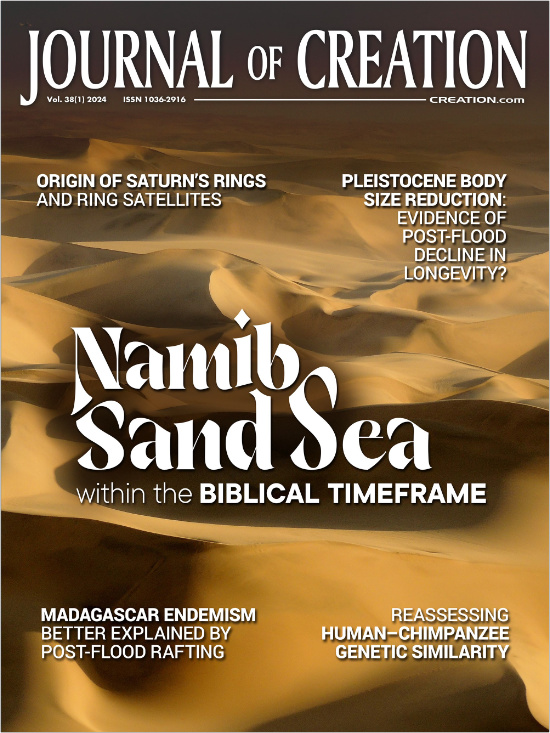
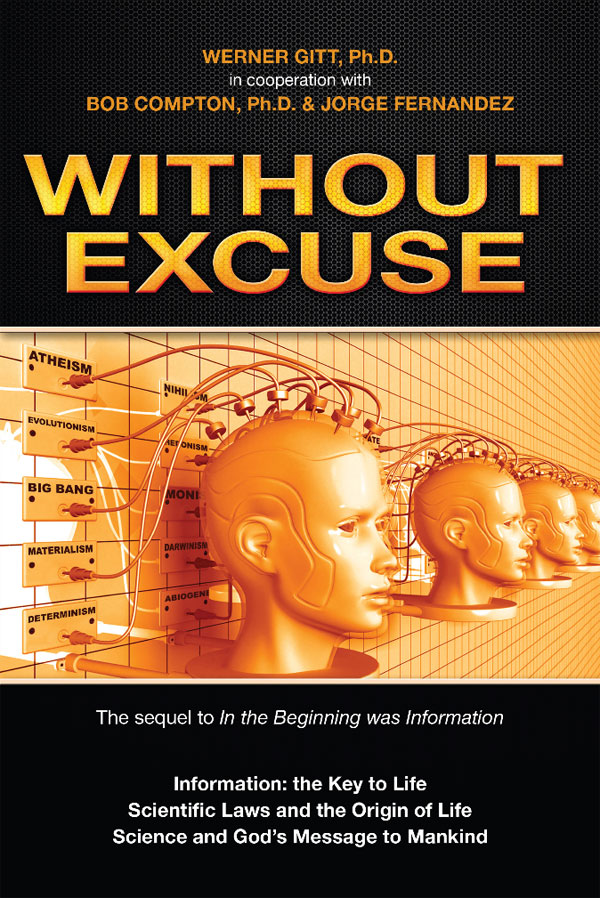
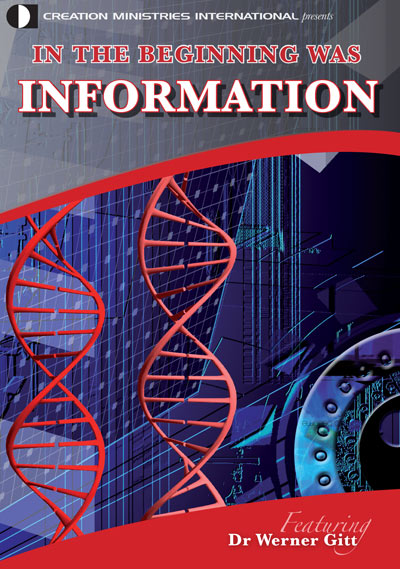
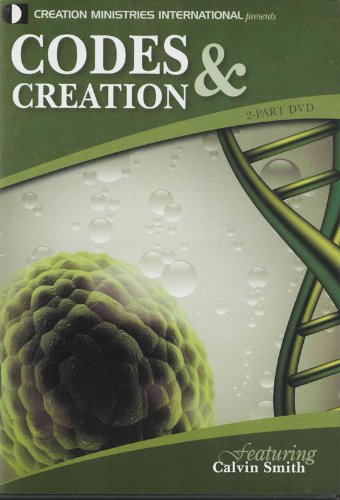
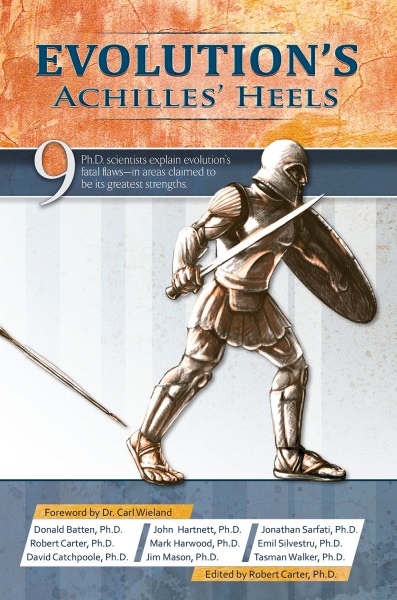
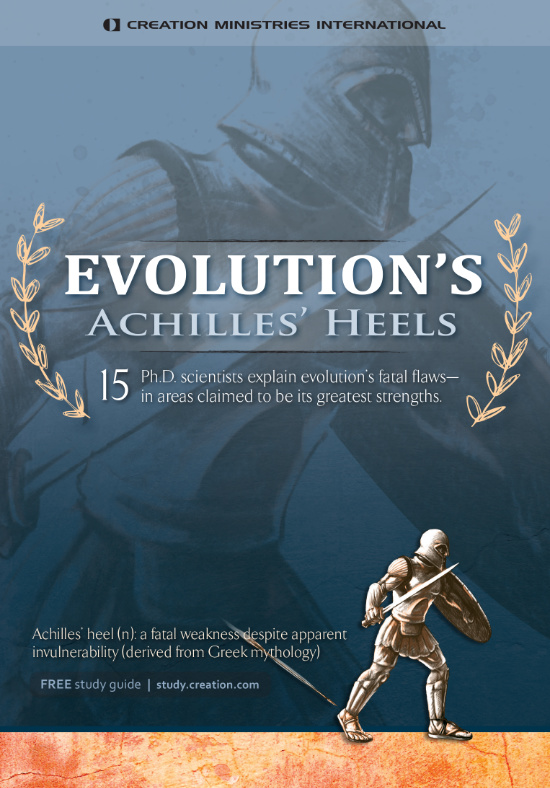

Readers’ comments
Comments are automatically closed 14 days after publication.